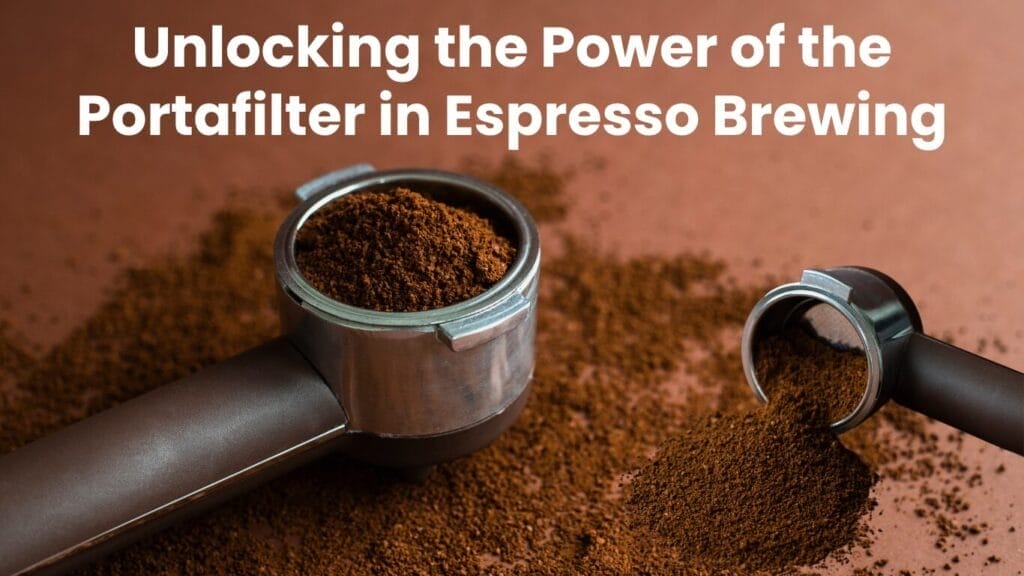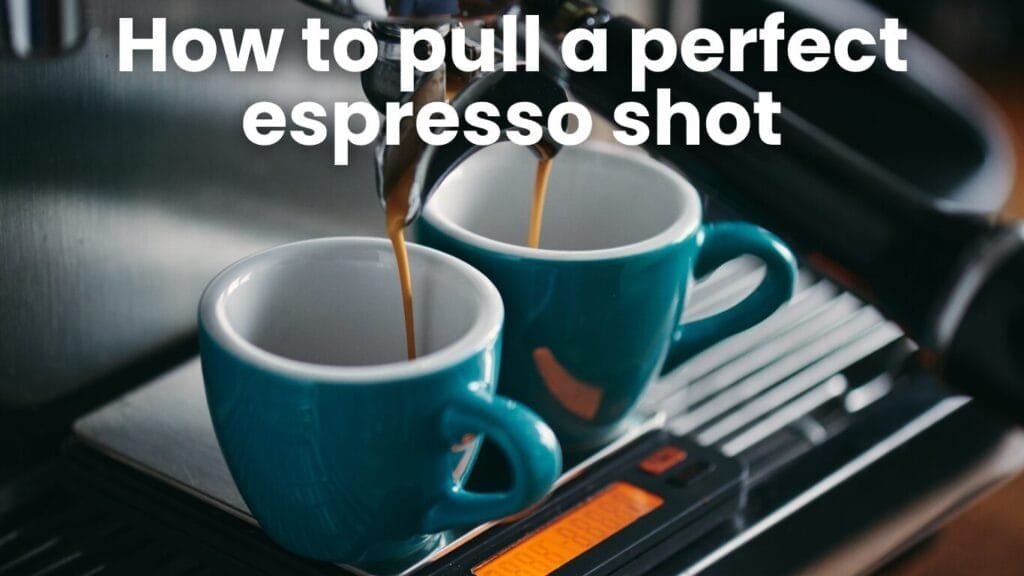Craving café-quality espresso at home? You’re in the right place. This Espresso Machine Beginner’s Guide covers everything from how machines work to how to choose the perfect one. Learn to brew like a barista, upgrade your mornings, and start your home espresso journey with confidence and delicious results every time.
Table of Contents
Why Every Coffee Lover Needs an Espresso Machine Beginner’s Guide
If you’re passionate about coffee, there’s a good chance you’ve dreamed of mastering espresso at home. But let’s face it—figuring out where to begin can feel like learning a new language.
From pressure levels and portafilters to tamping and timing, the espresso world can be confusing for beginners.
That’s exactly why an Espresso Machine Beginner’s Guide isn’t just helpful—it’s essential.
Master the Basics Without Feeling Overwhelmed
Espresso brewing combines art and science. It’s not just about pressing a button—it’s about understanding how grind size, water temperature, and pressure work together to extract that rich, concentrated flavor we all love.
But without proper guidance, beginners often find themselves frustrated by bitter shots or inconsistent results.
A well-structured beginner’s guide simplifies it all. It walks you through key terminology, demystifies machine types, and shows you exactly how to get started—step by step.
Whether you’re using a manual lever machine or a modern fully automatic model, a guide helps you build a solid foundation without the guesswork.
Brew Barista-Level Coffee at Home
There’s something deeply satisfying about brewing your espresso at home. Not only do you save time and money by skipping the daily café run, but you also get full control over flavor, strength, and style.
Do you want a smooth flat white or a bold ristretto? You can do it if you have the appropriate machine and the right information.
An Espresso Machine Beginner’s Guide empowers you to explore and customize your coffee just the way you like it. It turns your kitchen counter into a personal coffee bar where every shot is a step closer to perfection.
Save Money Without Sacrificing Quality
Many beginners assume that quality espresso requires a huge budget, but that’s not true. With so many affordable entry-level machines on the market, you can get excellent results without breaking the bank. The challenge is knowing which features are must-haves and which are just marketing fluff.
Examine the fine print to find out what is covered and what you will need to purchase individually. It teaches you what to prioritize—like consistent pressure, temperature stability, and ease of use—so you can make a smart investment from the start.
Learn to Maintain Your Machine Like a Pro
Buying a machine is only the beginning—keeping it running smoothly is what ensures great coffee every time. To avoid accumulation, maintain pressure, and keep internal components operating, espresso machines require routine maintenance.
A comprehensive guide will walk you through essential maintenance routines: daily rinsing, weekly cleaning, monthly descaling, and how to properly store your gear.
It’s knowledge that not only improves your espresso quality but also extends the life of your machine.
Build Confidence, One Shot at a Time
Everyone messes up their first few shots. That’s part of the learning curve. However, given the correct direction, those initial errors turn into lessons learned rather than failures. A beginner’s guide gives you context for what went wrong—and how to fix it.
You’ll learn how to recognize under-extracted vs. over-extracted shots, how to adapt your method according to your machine, and how to adjust the grind size.
Instead of guessing, you’ll approach each brew with clarity and growing confidence.
Unlock the Gateway to Coffee Creativity
Once the basics become second nature, espresso becomes more than a drink—it becomes a passion.
You’ll be motivated to experiment with single-origin beans, different brew ratios, foaming techniques, and even latte art once you have mastered the fundamentals.
Your espresso machine will go from a simple appliance to a creative outlet—and it all starts with understanding the basics through a proper beginner’s guide.
How to Choose the Right Espresso Machine for Beginners
Selecting your first espresso maker is an exciting and significant step. But with the variety of models on the market, each with different features, functions, and price tags, it’s easy to feel overwhelmed.
That’s why this section of our Espresso Machine Beginner’s Guide is dedicated to helping you make a smart, confident choice based on your experience level, coffee preferences, and budget.
“With so many models out there, our curated espresso machine category makes it easier to compare beginner-friendly machines based on features and budget.”
First, Know Your Coffee Personality
Before diving into espresso machine specs, it’s important to identify what kind of coffee drinker you are. Ask yourself:
- Do I want to learn the full espresso-making process, or do I just want fast results?
- Am I mainly drinking straight espresso, or do I love milk-based drinks like lattes and cappuccinos?
- How much time do I want to spend on each cup?
- Is my kitchen space limited?
Knowing your preferences will help narrow down the machine type that suits your lifestyle, not just what’s popular or highly rated.
A Closer Look at Espresso Machine Types for Beginners
Let’s examine the primary types of espresso makers, paying particular attention to the requirements of novices.
1. Manual Lever Machines (For the Purist Beginner)
Manual machines look beautiful and give full control, but they require significant skill. You’re responsible for controlling pressure by pulling a lever during the shot.
- Pros: Maximum control, vintage aesthetic
- Cons: Steep learning curve, not ideal for beginners who want ease
2. Semi-Automatic Machines (Most Popular for Beginners)
You’ll grind, tamp, and start/stop the shot yourself, but the machine controls water pressure. Great for learning the fundamentals while still enjoying flexibility.
- Pros: Great for learning, allows creativity, solid value range
- Cons: Slight learning curve, requires a separate grinder in many cases
3. Automatic Machines
These machines automate shot timing. You still grind and tamp the coffee, but it ends the shot for you. Slightly more beginner-friendly than semi-auto.
- Pros: Consistency, hands-free brewing process
- Cons: Less control, fewer models in the lower price range
4. Super-Automatic Machines
Fully automated: press a button and the machine does everything—grinds, tamps, brews, and even froths milk.
- Pros: Fast, consistent, very beginner-friendly
- Cons: Expensive, limited customization, more parts to maintain
5. Capsule Machines (Nespresso, etc.)
Simply insert a pod and click start; there is no need for a grind, tamp, or cleanup. While not “true” espresso by Italian standards, it’s a convenient entry point.
- Pros: Foolproof, fast, low-maintenance
- Cons: Limited flavor control, recurring pod cost, waste factor
Espresso Machine Budget Guide for Beginners
There’s a wide range of prices in the espresso machine world, but here’s how to break it down by budget bracket:
Under $150:
- Expect compact pod machines or basic entry-level espresso makers
- Good for casual drinkers and space-savers
- Limited durability or steam power
$150–$300:
- Entry-level semi-automatic machines with decent steam wands
- Often requires a separate grinder
- Good for learning the craft without a huge investment
$300–$600:
- Mid-range machines with better build quality, PID temperature control, and improved steaming
- Can grow with you as your skills improve
- Often found in top beginner machine lists (Breville Bambino, Gaggia Classic Pro)
$600–$1,000+:
- Higher-end semi-automatic or entry-level super-automatic machines
- Better consistency, pressure profiling, or one-touch latte options
- Great if you’re dedicated and want café-caliber coffee at home.
Remember: don’t forget to budget for a burr grinder, scale, tamper, knock box, and cleaning tools—all of which are essential for a solid beginner setup.
What Features Matter Most for Beginners?
Here’s a breakdown of features to prioritize in a beginner-friendly espresso machine:
| Feature | Why It Matters |
| Built-in grinder | Saves space and cost, though often not as powerful as standalone grinders |
| PID temperature control | Stabilizes heat for consistent shots |
| Pre-infusion function | Helps beginners get smoother, less bitter espresso |
| Steam wand | Essential for making milk-based drinks—check for swivel and pressure strength |
| Fast heat-up time | Makes daily use quicker and more convenient |
| Easy-to-clean components | Simple descaling, a water tank, and a detachable drip tray are essential. |
Consider Long-Term Value
A beginner-friendly machine should not only be easy to use, but also durable enough to support you as your skills evolve. Look for machines with:
- Strong warranties (1–2 years minimum)
- Replacement parts availability
- Active user communities or support forums
- Brand reputation in the home barista space
Breville, Gaggia, De’Longhi, and Rancilio are all brands with proven reliability and good support for new users.
Example Scenarios to Help You Decide
Still unsure? These novice profiles include suggestions for machine types. :
- The Budget Sipper: You want affordable espresso without much fuss → Try a Nespresso Essenza Mini or De’Longhi Stilosa
- The Aspiring Home Barista: You want to learn espresso-making properly. ↑ Start with a Breville Bambino Plus or Gaggia Classic Pro.
- The Milk Drink Lover: You mainly drink lattes or cappuccinos → Look for machines with strong steam wands or auto-frothing, like the Bambino Plus or Philips 3200 LatteGo
- The Set-and-Forget Type: You just want to press a button and enjoy → Invest in a super-automatic like Jura ENA or Breville Oracle Touch
FAQS||Espresso Machine Beginner’s Guide
What’s the Best Type of Espresso Machine for Beginners?
A semi-automatic espresso machine is ideal for beginners, offering hands-on learning with just enough automation to ensure consistency and ease during the brewing process.
How Do I Make My First Espresso Shot?
Grind fresh coffee, tamp evenly, lock the portafilter, and brew for 25–30 seconds. Aim for a balanced shot with golden crema and a rich, smooth flavor.
How Often Should I Clean My Espresso Machine?
Rinse daily, clean the group head weekly, and descale monthly. Regular maintenance ensures better-tasting espresso and extends your machine’s life and performance.
What Should I Do If My Espresso Machine Stops Working?
Check the power source, clean clogged parts, and review the user manual. If issues persist, contact the manufacturer’s support or a certified repair service.
What Accessories Do I Need with My First Espresso Machine?
You’ll need a burr grinder, tamper, milk frothing pitcher, scale, cleaning brush, and knock box to brew consistently and keep your machine well-maintained.
Bottom Line
It’s thrilling and satisfying to begin your espresso adventure. With the right machine, basic accessories, and a bit of practice, you can brew affordable espresso that tastes café-quality right from home.
Whether you prefer simplicity or hands-on control, there’s an espresso machine perfectly suited to your needs.
Just remember, the key to great espresso is consistency, maintenance, and a genuine passion for the craft. So, choose wisely, invest in your equipment, and enjoy the process of becoming a home barista.








I enjoy your writing style truly enjoying this internet site.